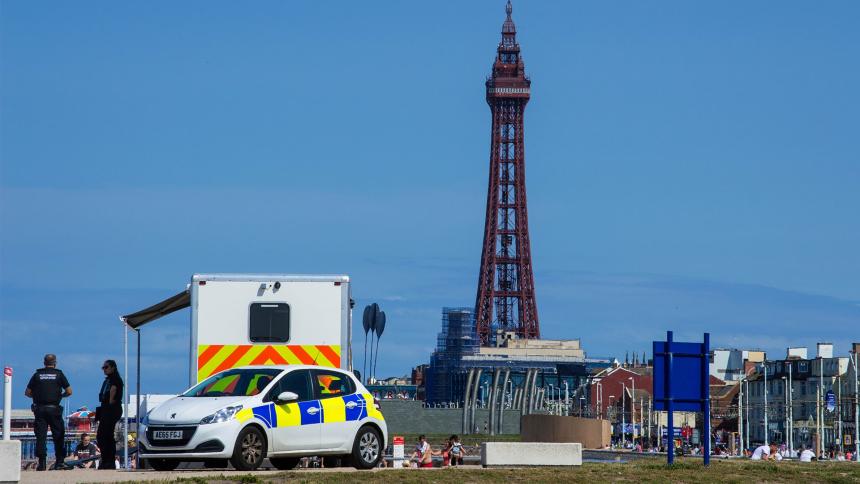
Does violent crime go up in summer?
For all its glories, summer can also bring its share of irritations. Think over-crowded beer gardens, flies nonchalantly buzzing into your house, and barbecue coals refusing to light in a uniform fashion (just keep cramming in the fire lighter cubes and you’ll be fine).
But summer also comes with a rather more sinister downside. According to a plethora of research that’s been compiled over generations, violent crimes like assaults and homicides appear to become more prevalent when the sun starts to shine. A 1992 article in the British Journal of Criminology titled ‘The Effect of Temperature on Crime’ emphasised the “almost universal finding in the literature that violent crimes are more common during the hotter seasons and months of the year”. Even more damningly, the article’s author, Simon Field, wrote that “apart from the criminological universals of age and gender, it would be difficult to find any other factor which is so consistently correlated with violent crime.”
Studies have revealed the connection between warm conditions and violence or aggression. To pluck one almost at random, there’s the US National Bureau of Economic Research paper on “the urban crime and heat gradient”. Published in 2019, it delved into police crime reports, arrest counts, and service calls recorded in Los Angeles between 2010 and 2017. The upshot? On average, violent crime increased by 5.7% on days when temperatures exceeded 29.4°C.
That same year, the Washington Post reported on data from Chicago showing that, between 2001 and 2018, the average number of homicides in the Windy City would spike significantly every summer. There was also a 2019 paper focusing on South Africa, which found that “a one-degree Celsius increase in same-day maximum temperature… was associated with a 1.5% increase in definite homicides.”
Meanwhile, here in the UK, similar patterns can be gleaned from data recorded by London’s Metropolitan Police. Their month-by-month records showed that, between 2010 and 2018, violent crime in the capital was on average 14% higher when the temperature rose above 20°C, compared to when it was below 10°C.
The underlying reason for this stark correlation has long been debated. Should most of the blame be assigned to the heat itself, for doing funny things to our brains? Is it the way the warmer temperatures change our routines and how we socialise, thereby creating contexts for potentially violent confrontations? Or is everyone just being driven to homicidal fury by the tinny tunes of ice cream vans?
The ‘temperature-aggression hypothesis’ will certainly be persuasive to anyone who’s ever sighed in frustration while clinging to an inadequate fan on a clammy summer’s day. Much research has been done into how hotter temperatures can directly make people frustrated, tense, and aggressive.
A 1986 study with the striking title ‘Ambient Temperature and Horn Honking’ looked at driver behaviour during spring and summer in Arizona. The results indicated a “direct linear increase in horn honking with increasing temperature”. There was also a fascinating 2019 paper investigating the effect of “thermal stress” on human behaviour, which assessed 2,000 participants in North America and Africa.
Taking place within controlled laboratory conditions, the research found that “heat significantly affects individuals’ willingness to voluntarily destroy other participants’ assets”. This must rank as one of the more ominous sentences ever to have been written in a scientific paper.
It’s been theorised that, as well as simply making us feel more flustered, fidgety, and irritable, heat may actually alter the way our brains function. For example, a 2017 study in Finland observed that ambient temperatures correlated with their volunteer subjects’ serotonin levels. This is telling since serotonin is a neurotransmitter that modulates mood. There’s also a theory that hot temperatures boost testosterone levels, making people more prone to aggression.
The counterpoint to the temperature-aggression theory is the routine activity theory – i.e., the problem isn’t the heat itself, but how the heat affects our habits. According to this view, violent crime increases during summer and other hotter periods because more of us go out and mingle with strangers, often in inebriated settings (think of those over-crowded beer gardens).
Police officers in the UK said as much in 2018 when discussing spikes in 999 calls during searing heat waves. In a statement to the BBC, West Midlands Police seemed to subscribe to the routine activity theory, blaming “a combination of the World Cup, summer heatwave and excess alcohol”. North Yorkshire Police agreed, telling the BBC that calls soared on weekends when people were “outside, drinking in the sunshine”.
It’s difficult to come to a definitive conclusion. The truth is, both heat and heat’s social effects are likely to play a part in violent crime rates. Socioeconomic factors like income inequality and deprivation have also been shown to skew data on temperatures and crime rates. Ultimately, the whole phenomenon was summed up by one police officer’s statement to the Independent about the 2018 heatwaves: “The public react very strangely when the weather gets hot.”








